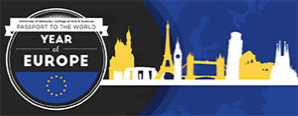
The Journey to Modern Europe: Evolution of the European Union
Preview

Description
The creation of the European Union as we know it began with the conclusion of the Second World War. At that time there was a call for the creation of a united Europe with the intention of preventing future wars among the nations. As a result of the war, Europe was split into Eastern and Western factions. As the Western nations began to form the Council of Europe in 1950, there was a call for further cooperation.
On May 9, 1950, Robert Schuman, the French foreign minister, called for a deeper cooperation among European nations (this would be known as the Schuman Plan). This day would later be honored as “Europe Day,” which honors peace and unity within Europe.
Six nations responded to this call. On April 18, 1951, Belgium, Germany, France, Italy, Luxembourg, and the Netherlands sign a treaty that forms the European Coal and Steel Community (ECSC), which ran the countries’ coal and steel under a united management.
The ECSC countries followed up by signing the Treaty of Rome on March 25, 1957, and this would create the European Economic Community (EEC). As a result, people, goods, and other services can now move freely across the borders.
Curation Date
8-2016
Creative Commons License

This work is licensed under a Creative Commons Attribution-Share Alike 4.0 International License.
Keywords
European Union, European Coal and Steel Community, ECSC, European Economic Community, EEC

